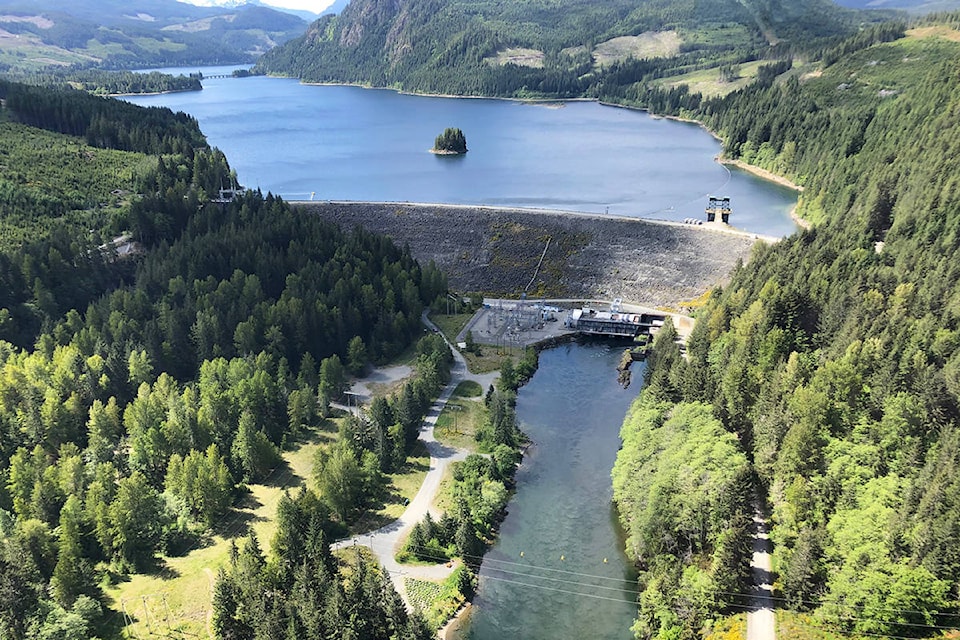The Campbell River watershed is witnessing a drying trend as we move into the summer months after a slightly above normal May for rainfall and snowmelt.
BC Hydro provided an update on the Campbell River watershed water supply forecast for the summer and its hydroelectric operations.
BC Hydro is continuing to closely monitor the water conditions in the Campbell River watershed that has been helped in the past month by water inflows from snowmelt and an average rainfall for May, said BC Hydro spokesperson Stephen Watson.
The upper watershed precipitation for the month of May was 102 per cent of average. Precipitation has been lower than normal from February to April. The snowpack looks to be depleted in the next few weeks. There was significant snowmelt contributing to the system in May. The amount of inflows from rainfall and snowmelt contributions had the inflows into the reservoirs at about 110 per cent of normal for the month of May.
BC Hydro’s February to September water supply forecast is updated each month. The updated June water supply forecast for the period of February to September is showing 81 per cent of normal. The residual forecast for water inflow from June to September is about 56 per cent of normal.
BC Hydro has been providing a downstream flow of about 100 cubic metres per second (m3/s) below its John Hart facilities down the Campbell River. Generally, the three dams and the generating station run in tandem to provide downstream flows. Looking ahead, BC Hydro will work with Fisheries and Oceans Canada to look at reducing flows as we move through June. Generally, 80 m3/s keeps the riverbed and fish habitat fully covered with water. When BC Hydro reduces flows below that level, which it does each summer, it will have its biologists on the river to move fish that may get isolated back into the Campbell River mainstem.
The final flow reduction down to about 30 m3/s will be in place by July 1.
Water inflows into the Campbell River watershed are currently about 90 m3/s but are dropping with the depleting snowpack.
The water level in Upper Campbell Reservoir/Butte Lake is currently 217.6 metres. The summer recreation target from mid-June to early September is 217 m to 220.5 m. BC Hydro forecasts, with some flow reductions sooner than normal in June, that the reservoir level may be near the lower end of that target range through the summer. The summer recreation levels may be lower given the snowpack depleting earlier than normal.
The Lower Campbell Reservoir/McIvor Lake is currently at about 177 metres. The current forecast has the reservoir level staying on the lower end of the summer recreation level targets of 176.5 metres to 177.5 metres.
RELATED: Canyon View Trail opens but Elk Falls Suspension Bridge remains closed
RELATED: BC Hydro, Chamber of Commerce launch job website for Campbell River dam projects
